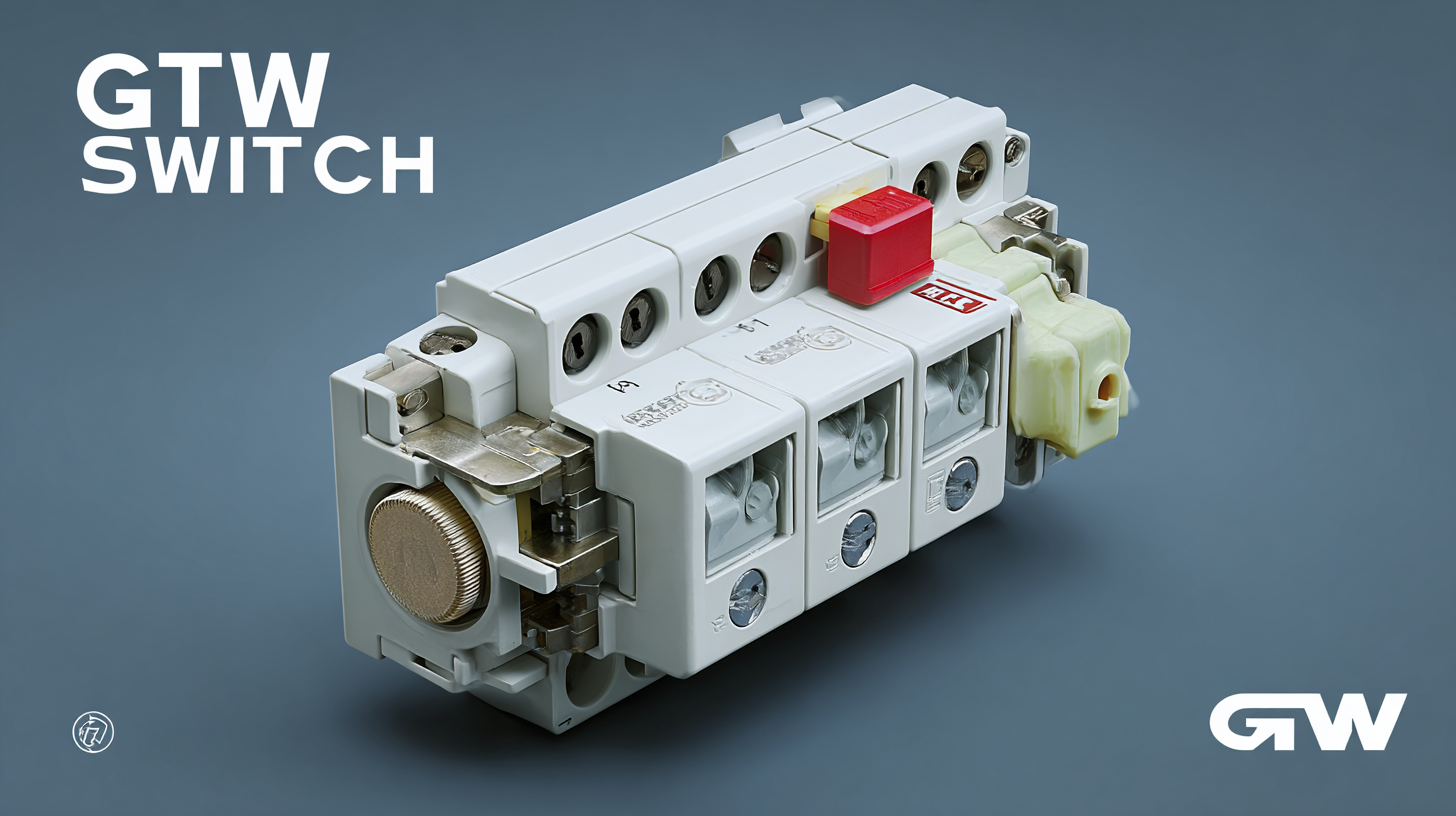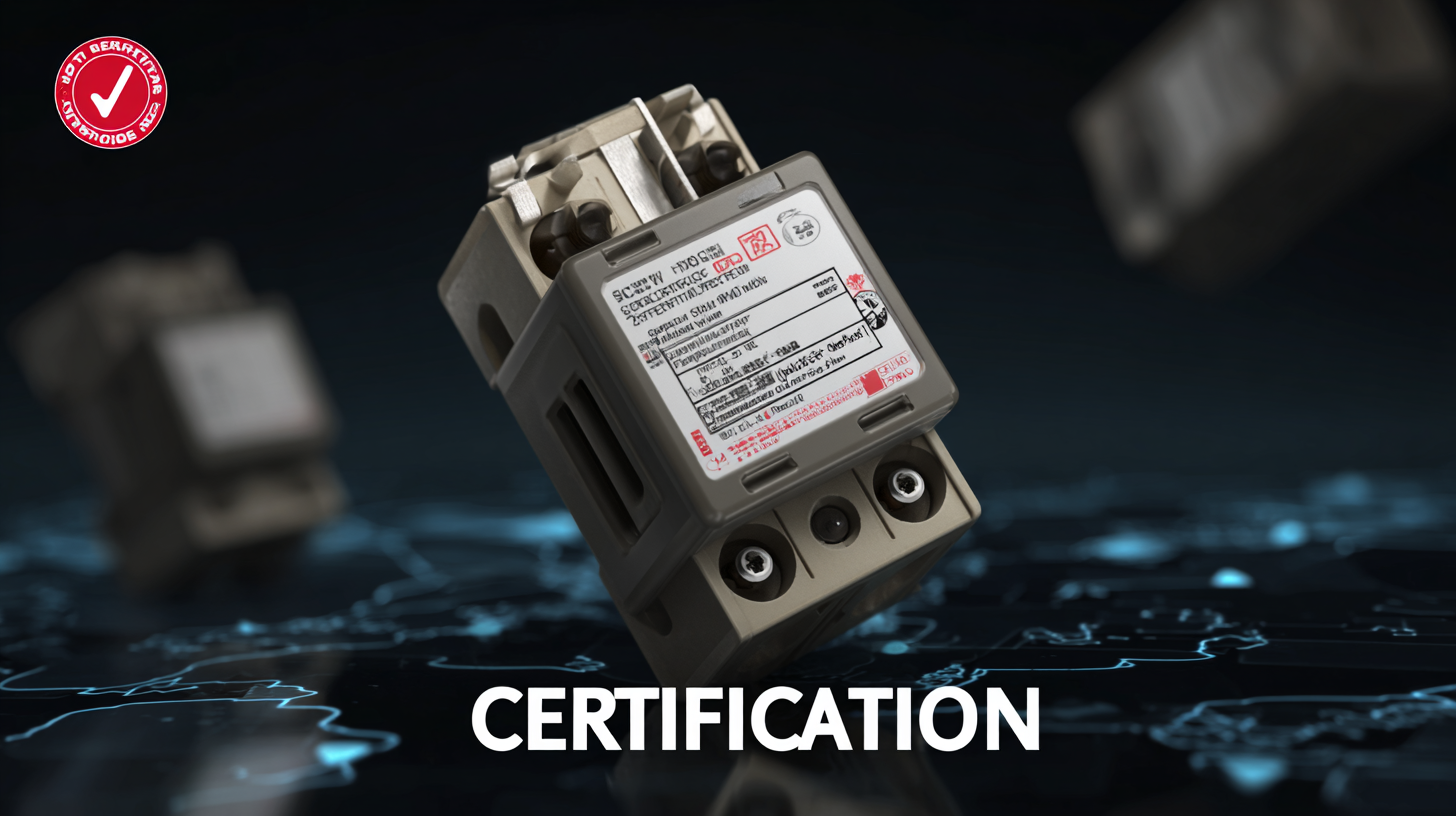
How to Navigate Import Certification for the Best Selector Switch: A Global Procurement Guide
In today's increasingly interconnected global market, the importance of effective import certification processes cannot be overstated, especially in sectors relying heavily on components such as the selector switch. According to data from the International Trade Administration, the global switchgear market is projected to reach USD 175 billion by 2027, with selector switches playing a crucial role in various applications, from industrial automation to consumer electronics. Navigating the complexities of import certification not only ensures compliance with regional regulations but also enhances supply chain efficiency and product reliability. As companies strive to procure the best selector switches while mitigating risks associated with cross-border trade, understanding the "alternatives" available in compliance can significantly influence their procurement strategies. This blog aims to guide procurement professionals through the essential considerations in import certification to optimize their sourcing processes for selector switches.

Understanding Import Certification Requirements for Selector Switches
When navigating the complexities of global procurement, understanding import certification requirements for selector switches is crucial. These components are essential in various applications, from industrial machinery to consumer electronics, and compliance with local regulations can significantly impact market entry and operational efficiency. Different countries have varying certification standards, which may include safety, environmental, and electromagnetic compatibility regulations. Researching these requirements beforehand is essential to avoid costly delays and ensure product quality.
To successfully manage import certification, it is advisable to engage with relevant regulatory bodies or consult experts in compliance. Importers should gather documentation such as test results, material safety data sheets, and compliance certificates. Additionally, manufacturers may need to undergo third-party testing to verify conformity to specified standards. Establishing a clear understanding of the certification process not only streamlines the procurement strategy but also enhances the overall reliability and safety of selector switches in the intended applications.
How to Navigate Import Certification for the Best Selector Switch: A Global Procurement Guide
| Country | Import Certification Required | Lead Time for Certification | Cost Estimate (USD) | Key Regulatory Body |
|---|---|---|---|---|
| United States | UL Certification | 4-6 weeks | $1,200 | Underwriters Laboratories (UL) |
| Canada | CSA Certification | 6-8 weeks | $1,000 | Canadian Standards Association (CSA) |
| European Union | CE Marking | 3-4 weeks | $1,500 | European Commission |
| Australia | RCM Certification | 3-5 weeks | $900 | Australian Communications and Media Authority (ACMA) |
| Japan | PSE Mark | 2-3 weeks | $1,000 | Ministry of Economy, Trade and Industry (METI) |
Key Market Trends in Selector Switch Procurement by 2025
In navigating the selector switch procurement landscape, market trends leading up to 2025 reveal several pivotal shifts. With the global procurement scene evolving, AI adoption is poised to streamline procurement tasks by up to 80%, enabling teams to accurately predict costs, automate key activities, and refine supplier selection. This capability is crucial as manufacturers increasingly focus on building resilient supply chains to manage the potential challenges posed by economic uncertainty and shifts in consumer behaviors.
As the fashion supply chain faces increased pressure from raw material shortages and labor challenges, procurement teams must remain agile and tech-savvy. By leveraging advanced data analytics, organizations can identify growth opportunities even amidst disruption. Top industry reports suggest that targeted investments in digital tools will play a critical role in addressing the ongoing skills gap and enhancing procurement efficiencies. Thus, understanding these emerging trends and adapting strategies accordingly will be essential for stakeholders aiming to secure a competitive edge in the selector switch market by 2025.
Selector Switch Procurement Trends by 2025
This bar chart illustrates the projected growth in procurement trends for selector switches across various key markets by 2025. The data reflects an increasing demand driven by technological advancements and growing industrial applications.
Comparative Analysis of Global Sourcing Strategies for Selector Switches
When sourcing selector switches, understanding the global landscape of procurement strategies is key to making informed decisions. Different regions present unique advantages and challenges that can influence both cost and quality. For instance, Asian manufacturers often provide competitive pricing due to lower labor costs, while European suppliers may offer superior quality assurance and compliance with stricter regulations. An in-depth comparative analysis reveals that while cost-saving is significant, long-term partnerships with reliable suppliers from regions known for quality can lead to more sustainable sourcing strategies.

Moreover, the regulatory environment plays a crucial role in the selection process. Navigating import certification can vary widely across countries, impacting lead times and overall project timelines. Countries with stringent certification processes may require more documentation and testing, potentially delaying procurement. Therefore, understanding each region’s regulatory landscape is essential for businesses looking to optimize their supply chain while ensuring compliance. Tailoring strategies to align with the specific requirements of different sourcing regions not only reduces risks but also enhances the procurement process for selector switches.
Real-World Case Studies: Successful Import Certification for Selector Switches
Navigating the complexities of import certification for selector switches can be a significant hurdle for global procurement professionals. Real-world case studies highlight various successful strategies that can streamline this process. For instance, one company faced challenges with compliance due to varying regulations across different countries. By conducting comprehensive research and building relationships with local regulatory bodies, they managed to navigate the certification landscape effectively. This proactive approach not only eased their import process but also reduced delays and costs associated with compliance issues.

Tips for a successful import certification journey begin with understanding the specific requirements of the destination country. Regulations can vary widely, and staying informed will help prevent costly mistakes. Additionally, collaborating with experienced logistics providers and legal experts can offer invaluable insights. Lastly, maintaining detailed records of all correspondence and certification documents can safeguard against disputes or confusion later in the import process.
Another interesting case involved a manufacturer who utilized digital certification platforms to speed up the import certification process. They found that employing a technology-driven approach significantly reduced paperwork and processing time. By embracing digital solutions, companies can enhance efficiency, ensuring their selector switches are compliant and ready for market entry without unnecessary delays.
Navigating Compliance Challenges in Global Selector Switch Procurement
When engaging in global procurement of selector switches, understanding compliance challenges is essential to ensure a smooth import certification process. Different regions impose varying regulations regarding safety standards and certifications, which can complicate sourcing decisions. It's crucial to stay informed about the specific requirements in each target market to minimize delays and risks associated with compliance violations.
Tip: Always verify the relevant certifications required in your procurement region before making any purchasing decisions. This includes understanding international standards such as IEC or UL and ensuring that the products you select meet those benchmarks. Keep an open line of communication with your suppliers to clarify their certification statuses and to ensure that they are compliant with your local regulations.
Additionally, utilizing technology can significantly aid in navigating compliance challenges. Digital platforms can provide access to databases that track compliance statuses, offer insights on legal changes, and streamline documentation processes.
Tip: Leverage e-procurement tools that allow you to automate compliance checks and maintain an organized record of all certification documents. This not only saves time but also helps in audits, ensuring that your procurement process remains transparent and compliant with all necessary regulations.
